Zhirui Chen
Words or Vision: Do Vision-Language Models Have Blind Faith in Text?
Mar 04, 2025Abstract:Vision-Language Models (VLMs) excel in integrating visual and textual information for vision-centric tasks, but their handling of inconsistencies between modalities is underexplored. We investigate VLMs' modality preferences when faced with visual data and varied textual inputs in vision-centered settings. By introducing textual variations to four vision-centric tasks and evaluating ten Vision-Language Models (VLMs), we discover a \emph{``blind faith in text''} phenomenon: VLMs disproportionately trust textual data over visual data when inconsistencies arise, leading to significant performance drops under corrupted text and raising safety concerns. We analyze factors influencing this text bias, including instruction prompts, language model size, text relevance, token order, and the interplay between visual and textual certainty. While certain factors, such as scaling up the language model size, slightly mitigate text bias, others like token order can exacerbate it due to positional biases inherited from language models. To address this issue, we explore supervised fine-tuning with text augmentation and demonstrate its effectiveness in reducing text bias. Additionally, we provide a theoretical analysis suggesting that the blind faith in text phenomenon may stem from an imbalance of pure text and multi-modal data during training. Our findings highlight the need for balanced training and careful consideration of modality interactions in VLMs to enhance their robustness and reliability in handling multi-modal data inconsistencies.
Optimal Multi-Objective Best Arm Identification with Fixed Confidence
Jan 23, 2025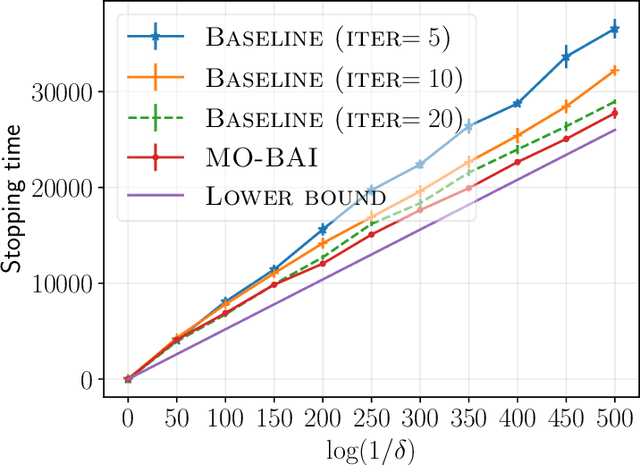

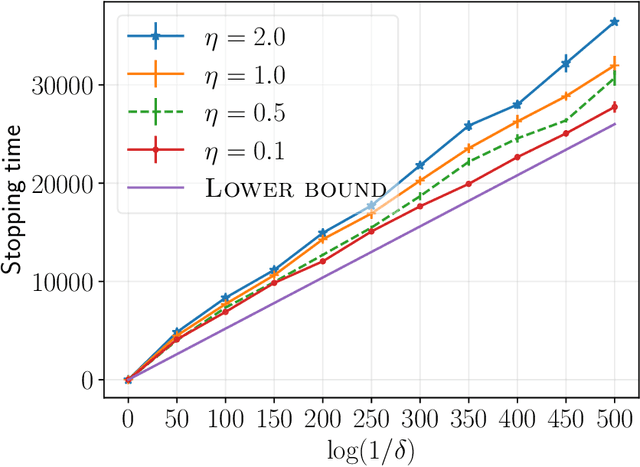

Abstract:We consider a multi-armed bandit setting with finitely many arms, in which each arm yields an $M$-dimensional vector reward upon selection. We assume that the reward of each dimension (a.k.a. {\em objective}) is generated independently of the others. The best arm of any given objective is the arm with the largest component of mean corresponding to the objective. The end goal is to identify the best arm of {\em every} objective in the shortest (expected) time subject to an upper bound on the probability of error (i.e., fixed-confidence regime). We establish a problem-dependent lower bound on the limiting growth rate of the expected stopping time, in the limit of vanishing error probabilities. This lower bound, we show, is characterised by a max-min optimisation problem that is computationally expensive to solve at each time step. We propose an algorithm that uses the novel idea of {\em surrogate proportions} to sample the arms at each time step, eliminating the need to solve the max-min optimisation problem at each step. We demonstrate theoretically that our algorithm is asymptotically optimal. In addition, we provide extensive empirical studies to substantiate the efficiency of our algorithm. While existing works on pure exploration with multi-objective multi-armed bandits predominantly focus on {\em Pareto frontier identification}, our work fills the gap in the literature by conducting a formal investigation of the multi-objective best arm identification problem.
Order-Optimal Instance-Dependent Bounds for Offline Reinforcement Learning with Preference Feedback
Jun 18, 2024Abstract:We consider offline reinforcement learning (RL) with preference feedback in which the implicit reward is a linear function of an unknown parameter. Given an offline dataset, our objective consists in ascertaining the optimal action for each state, with the ultimate goal of minimizing the {\em simple regret}. We propose an algorithm, \underline{RL} with \underline{L}ocally \underline{O}ptimal \underline{W}eights or {\sc RL-LOW}, which yields a simple regret of $\exp ( - \Omega(n/H) )$ where $n$ is the number of data samples and $H$ denotes an instance-dependent hardness quantity that depends explicitly on the suboptimality gap of each action. Furthermore, we derive a first-of-its-kind instance-dependent lower bound in offline RL with preference feedback. Interestingly, we observe that the lower and upper bounds on the simple regret match order-wise in the exponent, demonstrating order-wise optimality of {\sc RL-LOW}. In view of privacy considerations in practical applications, we also extend {\sc RL-LOW} to the setting of $(\varepsilon,\delta)$-differential privacy and show, somewhat surprisingly, that the hardness parameter $H$ is unchanged in the asymptotic regime as $n$ tends to infinity; this underscores the inherent efficiency of {\sc RL-LOW} in terms of preserving the privacy of the observed rewards. Given our focus on establishing instance-dependent bounds, our work stands in stark contrast to previous works that focus on establishing worst-case regrets for offline RL with preference feedback.
A Survey of Neural Code Intelligence: Paradigms, Advances and Beyond
Mar 21, 2024Abstract:Neural Code Intelligence -- leveraging deep learning to understand, generate, and optimize code -- holds immense potential for transformative impacts on the whole society. Bridging the gap between Natural Language and Programming Language, this domain has drawn significant attention from researchers in both research communities over the past few years. This survey presents a systematic and chronological review of the advancements in code intelligence, encompassing over 50 representative models and their variants, more than 20 categories of tasks, and an extensive coverage of over 680 related works. We follow the historical progression to trace the paradigm shifts across different research phases (e.g., from modeling code with recurrent neural networks to the era of Large Language Models). Concurrently, we highlight the major technical transitions in models, tasks, and evaluations spanning through different stages. For applications, we also observe a co-evolving shift. It spans from initial endeavors to tackling specific scenarios, through exploring a diverse array of tasks during its rapid expansion, to currently focusing on tackling increasingly complex and varied real-world challenges. Building on our examination of the developmental trajectories, we further investigate the emerging synergies between code intelligence and broader machine intelligence, uncovering new cross-domain opportunities and illustrating the substantial influence of code intelligence across various domains. Finally, we delve into both the opportunities and challenges associated with this field, alongside elucidating our insights on the most promising research directions. An ongoing, dynamically updated project and resources associated with this survey have been released at https://github.com/QiushiSun/NCISurvey.
Seeing is Believing: Mitigating Hallucination in Large Vision-Language Models via CLIP-Guided Decoding
Feb 23, 2024Abstract:Large Vision-Language Models (LVLMs) are susceptible to object hallucinations, an issue in which their generated text contains non-existent objects, greatly limiting their reliability and practicality. Current approaches often rely on the model's token likelihoods or other internal information, instruction tuning on additional datasets, or incorporating complex external tools. We first perform empirical analysis on sentence-level LVLM hallucination, finding that CLIP similarity to the image acts as a stronger and more robust indicator of hallucination compared to token likelihoods. Motivated by this, we introduce our CLIP-Guided Decoding (CGD) approach, a straightforward but effective training-free approach to reduce object hallucination at decoding time. CGD uses CLIP to guide the model's decoding process by enhancing visual grounding of generated text with the image. Experiments demonstrate that CGD effectively mitigates object hallucination across multiple LVLM families while preserving the utility of text generation.
Fixed-Budget Differentially Private Best Arm Identification
Jan 17, 2024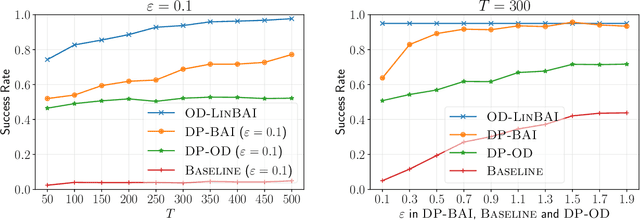

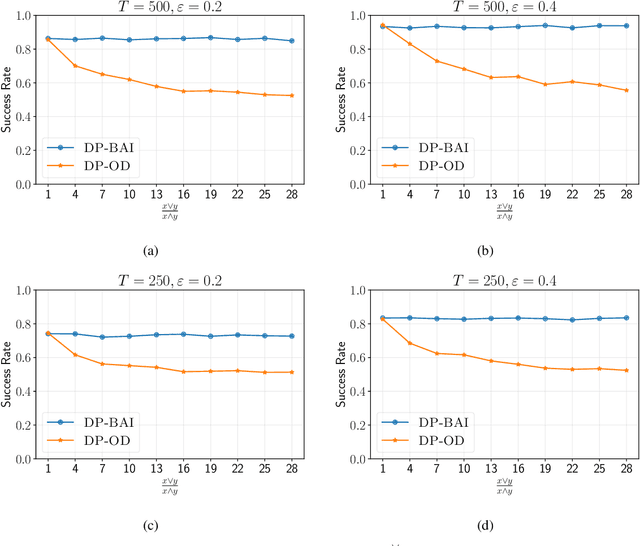
Abstract:We study best arm identification (BAI) in linear bandits in the fixed-budget regime under differential privacy constraints, when the arm rewards are supported on the unit interval. Given a finite budget $T$ and a privacy parameter $\varepsilon>0$, the goal is to minimise the error probability in finding the arm with the largest mean after $T$ sampling rounds, subject to the constraint that the policy of the decision maker satisfies a certain {\em $\varepsilon$-differential privacy} ($\varepsilon$-DP) constraint. We construct a policy satisfying the $\varepsilon$-DP constraint (called {\sc DP-BAI}) by proposing the principle of {\em maximum absolute determinants}, and derive an upper bound on its error probability. Furthermore, we derive a minimax lower bound on the error probability, and demonstrate that the lower and the upper bounds decay exponentially in $T$, with exponents in the two bounds matching order-wise in (a) the sub-optimality gaps of the arms, (b) $\varepsilon$, and (c) the problem complexity that is expressible as the sum of two terms, one characterising the complexity of standard fixed-budget BAI (without privacy constraints), and the other accounting for the $\varepsilon$-DP constraint. Additionally, we present some auxiliary results that contribute to the derivation of the lower bound on the error probability. These results, we posit, may be of independent interest and could prove instrumental in proving lower bounds on error probabilities in several other bandit problems. Whereas prior works provide results for BAI in the fixed-budget regime without privacy constraints or in the fixed-confidence regime with privacy constraints, our work fills the gap in the literature by providing the results for BAI in the fixed-budget regime under the $\varepsilon$-DP constraint.
Trust, but Verify: Using Self-Supervised Probing to Improve Trustworthiness
Feb 06, 2023Abstract:Trustworthy machine learning is of primary importance to the practical deployment of deep learning models. While state-of-the-art models achieve astonishingly good performance in terms of accuracy, recent literature reveals that their predictive confidence scores unfortunately cannot be trusted: e.g., they are often overconfident when wrong predictions are made, or so even for obvious outliers. In this paper, we introduce a new approach of self-supervised probing, which enables us to check and mitigate the overconfidence issue for a trained model, thereby improving its trustworthiness. We provide a simple yet effective framework, which can be flexibly applied to existing trustworthiness-related methods in a plug-and-play manner. Extensive experiments on three trustworthiness-related tasks (misclassification detection, calibration and out-of-distribution detection) across various benchmarks verify the effectiveness of our proposed probing framework.
Federated Best Arm Identification with Heterogeneous Clients
Oct 17, 2022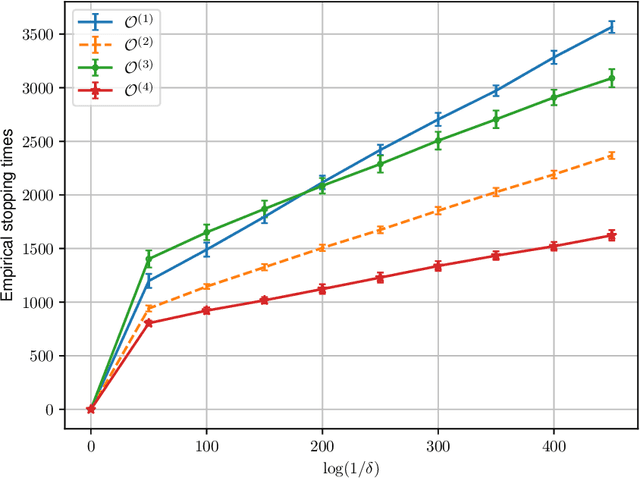
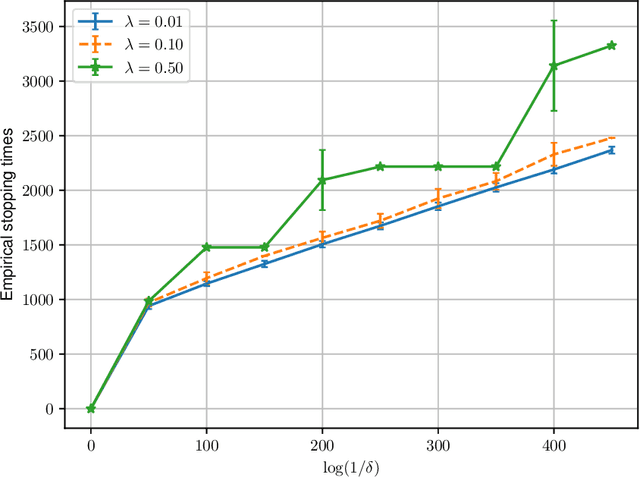
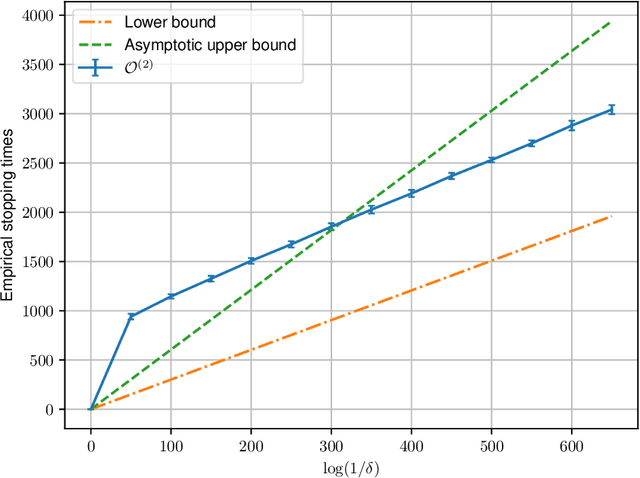

Abstract:We study best arm identification in a federated multi-armed bandit setting with a central server and multiple clients, when each client has access to a {\em subset} of arms and each arm yields independent Gaussian observations. The {\em reward} from an arm at any given time is defined as the average of the observations generated at this time across all the clients that have access to the arm. The end goal is to identify the best arm (the arm with the largest mean reward) of each client with the least expected stopping time, subject to an upper bound on the error probability (i.e., the {\em fixed-confidence regime}). We provide a lower bound on the growth rate of the expected time to find the best arm of each client. Furthermore, we show that for any algorithm whose upper bound on the expected time to find the best arms matches with the lower bound up to a multiplicative constant, the ratio of any two consecutive communication time instants must be bounded, a result that is of independent interest. We then provide the first-known lower bound on the expected number of {\em communication rounds} required to find the best arms. We propose a novel algorithm based on the well-known {\em Track-and-Stop} strategy that communicates only at exponential time instants, and derive asymptotic upper bounds on its expected time to find the best arms and the expected number of communication rounds, where the asymptotics is one of vanishing error probabilities.
Weakly Supervised Tracklet Person Re-Identification by Deep Feature-wise Mutual Learning
Oct 31, 2019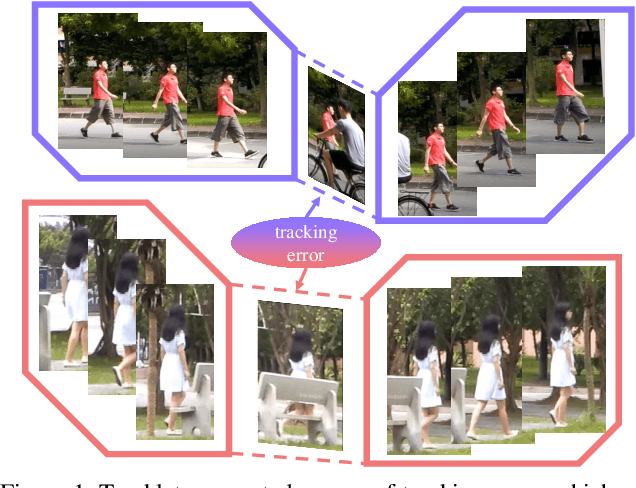

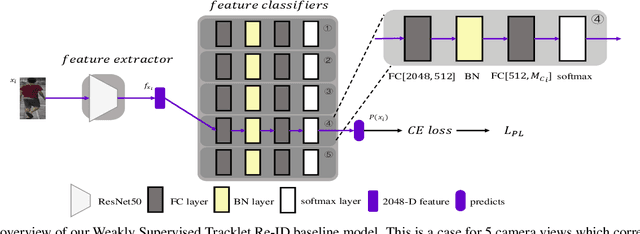

Abstract:The scalability problem caused by the difficulty in annotating Person Re-identification(Re-ID) datasets has become a crucial bottleneck in the development of Re-ID.To address this problem, many unsupervised Re-ID methods have recently been proposed.Nevertheless, most of these models require transfer from another auxiliary fully supervised dataset, which is still expensive to obtain.In this work, we propose a Re-ID model based on Weakly Supervised Tracklets(WST) data from various camera views, which can be inexpensively acquired by combining the fragmented tracklets of the same person in the same camera view over a period of time.We formulate our weakly supervised tracklets Re-ID model by a novel method, named deep feature-wise mutual learning(DFML), which consists of Mutual Learning on Feature Extractors (MLFE) and Mutual Learning on Feature Classifiers (MLFC).We propose MLFE by leveraging two feature extractors to learn from each other to extract more robust and discriminative features.On the other hand, we propose MLFC by adapting discriminative features from various camera views to each classifier. Extensive experiments demonstrate the superiority of our proposed DFML over the state-of-the-art unsupervised models and even some supervised models on three Re-ID benchmark datasets.
 Add to Chrome
Add to Chrome Add to Firefox
Add to Firefox Add to Edge
Add to Edge